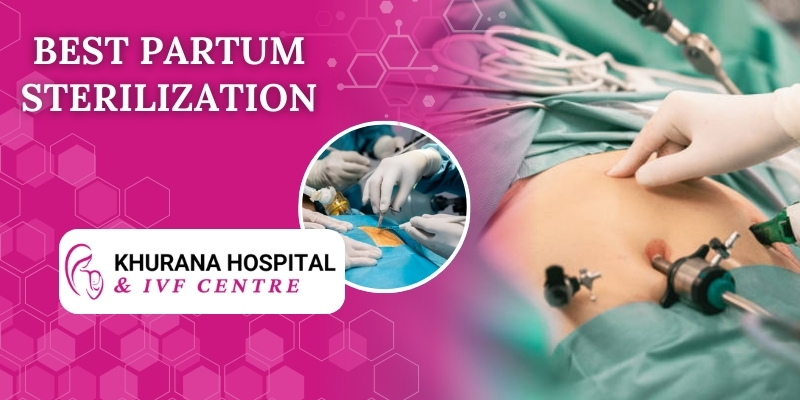Post-Partum Sterilization
- Home
- Gynaecology
- Post-Partum Sterilization

Post-partum sterilization is a permanent form of birth control performed after childbirth. It is an ideal option for women who have completed their family and no longer wish to have more children. At Khurana Hospital and IVF Centre, we offer safe and effective post-partum sterilization procedures to help you take control of your reproductive health and avoid the need for long-term contraception methods.
What is Post-Partum Sterilization?
Post-partum sterilization is a surgical procedure that involves closing or blocking the fallopian tubes to prevent pregnancy. The fallopian tubes are the pathways that carry eggs from the ovaries to the uterus. By preventing the egg from reaching the uterus, post-partum sterilization ensures that fertilization cannot occur.
When is Post-Partum Sterilization Performed?
Post-partum sterilization is typically performed within 24 to 48 hours after delivery, while the mother is still in the hospital. It can be done immediately after a vaginal delivery or a caesarean section and is often performed during the same surgical procedure. This timing minimizes the need for a separate surgery and is convenient for mothers who are already in the hospital.
Benefits of Post-Partum Sterilization
- Permanent Solution: It provides a permanent, one-time solution for women who do not wish to have more children.
- No Ongoing Maintenance: Unlike other forms of contraception (like pills or injections), post-partum sterilization requires no ongoing effort or maintenance.
- Safe and Effective: Post-partum sterilization is highly effective in preventing pregnancy, with a success rate of over 99%.
- Convenience: Since it’s performed shortly after childbirth, it eliminates the need for follow-up procedures or visits to a clinic for birth control.
Procedure for Post-Partum Sterilization
Consultation: Before undergoing post-partum sterilization, you will meet with one of our experienced gynaecologists to discuss your medical history, current health, and whether this procedure is right for you. Our team will provide you with all the necessary information about the procedure, risks, and benefits to help you make an informed decision.
Anesthesia: The procedure is performed under local or general anesthesia, depending on the method chosen and whether the procedure is done after a vaginal delivery or a caesarean section.
Procedure: During the procedure, your fallopian tubes are either cut, tied, clipped, or sealed. In some cases, the fallopian tubes are removed entirely. This can be done through small incisions in the abdomen (if done post-C-section) or through a small incision in the vagina.
Recovery: Recovery after post-partum sterilization is usually quick, especially if it is done during a caesarean section. Most women can return to their usual activities within a few days, though it’s important to avoid strenuous activities for a few weeks to ensure proper healing.
Gynaecology
- Adolescent problems
- Specialty Clinics in infertility
- Diagnosis of Gynaecological
- Contraception
- Surgery Abdominal & Vaginal Route
- Gynaecology Testing
- Gynaecology Treatments
- Post-Partum Sterilization
